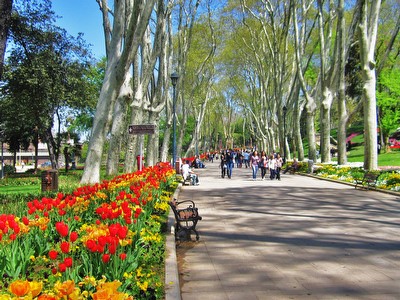FOOD CULTURE 1
The diverse food culture in Turkey is astounding to say the least.
When in İnegol you should try the Besler Inegöl Kofte, the restaurant, which sits beside the Kapali Çarşişi, where it all began when a Bulgarian immigrant from Filibe, Mustafa Efendi, 1842-1920, mixed beef and veal together with minced onion to create the town’s signature dish. Today, members of the third generation of the family still work at the restaurant, one of those pleasingly simple places where the food and the service still take precedence over opulence and show. Some people find Inegöl köfte a little on the chewy side, but, eaten with a simple salad of white beans and onion, with toasted bread dribbled with oil and with a glass of pomegranate juice to wash it down, it tastes quite heavenly.
İskender kebap is one of the most famous meat foods from northwestern Turkey and takes its name from its inventor, İskender Efendi, who lived in Bursa in the late 19th century. The “Doner” meat is prepared from thinly cut grilled lamb basted with hot tomato sauce over pieces of lavas bread and generously coated with melted sheep butter and yogurt. Additionally, one cylindrical köfte can be placed on top. It is commonly consumed with ayran, a drink to aid digestion. Tomato sauce and boiling butter are sometimes poured over the dish, at the table.
For a quick and cheap, yet filling snack the omnipresent Doner can be found on every street corner. The large pieces of meat are slowly rotated on a spit and the meat is thinly cut and placed into either flat pitta bread or half a loaf, depending on your appitite, along with fresh mixed salad. Washed down with a glass of ayran it makes an economical meal.
The restaurants on the first floor of the Hasan Paşa Han, Diyarbakir are famous for the huge “Diyarbakir Breakfasts”. A vast array of dishes, totalling more than twenty are placed on a large round stainless steel tray which sits in the middle of the table. The dishes are filled with locally produce cheeses, homemade salami and sausages, honey and preserves, locally grown olives and accompanied by the traditional flat bread and sweet dark tea. On Sundays it is sometimes very difficult to find a vacant table and there are frequent queues of would be diners.
No matter where one travels within the country pastry shops, patiseries, can be found in even the smallest of villages. The city of Gaziantep is where Baklava was first made. It can be flakey, yet crisp and tender and it melts in your mouth. Commercially bought baklava is baked and then soaked in sugar syrup but in the countryside the sugar is often relaced with honey which when placed in the mouth “tango’s with your tongue”. Topped with ground, green pistacho’s it is divine.
Milk puddings, such as rice pudding topped with cinammon, chocholate whips and creme caramel are very popular.
Time to discover Mutlu’s Mosaics & Food & Gods


